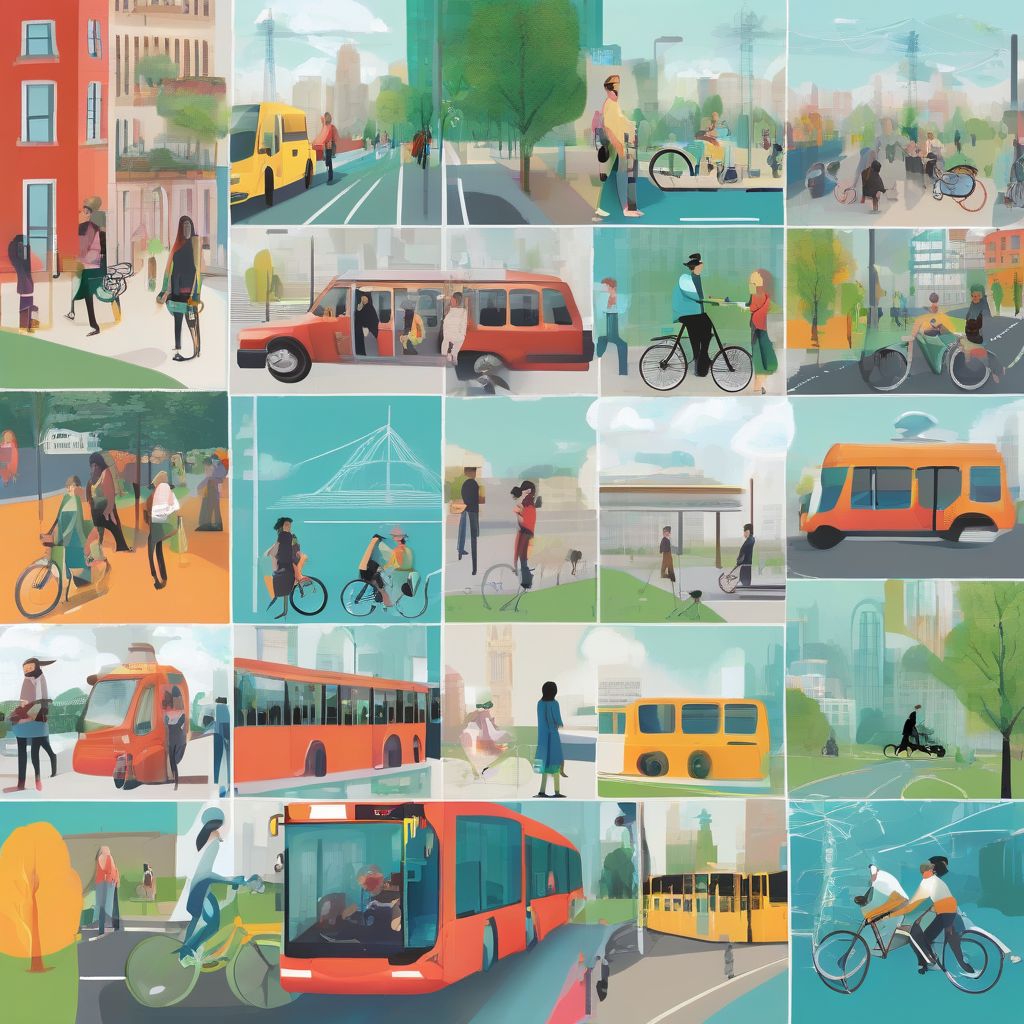Imagine a world where the air is clean, the streets are quiet, and our cities are vibrant green spaces. This isn’t a utopian dream; it’s a future within reach if we embrace sustainable transport. But what exactly is sustainable transport, and how does it contribute to an eco-friendly lifestyle? Let’s explore how making conscious choices about how we move can dramatically impact our planet and our well-being.
Understanding Sustainable Transport
Sustainable transport refers to any mode of transportation that minimizes its environmental impact, conserves resources, and supports social and economic equity. This encompasses everything from walking and cycling to public transit, electric vehicles, and even shared mobility schemes. It’s about rethinking our reliance on traditional, often polluting, vehicles and embracing cleaner, greener alternatives.
Reducing Our Carbon Footprint
One of the most significant ways sustainable transport supports eco-friendly living is by reducing our carbon footprint. Traditional gasoline-powered vehicles are a major source of greenhouse gas emissions, contributing to climate change. By choosing to walk, cycle, or take public transport, we significantly reduce these emissions, helping to create a cleaner and healthier atmosphere. Even switching to an electric vehicle, powered by renewable energy, can drastically cut down your personal contribution to air pollution.
 Sustainable Transport Options
Sustainable Transport Options
Improving Air Quality
Beyond carbon emissions, traditional vehicles also release harmful pollutants that contribute to poor air quality, particularly in urban areas. This can lead to respiratory problems and other health issues. Sustainable transport options, especially active travel like walking and cycling, offer a direct solution by reducing these pollutants and promoting cleaner air for everyone. Think of it as a prescription for a healthier city, one less congested breath at a time.
Conserving Resources
Sustainable transport also helps conserve valuable resources. Producing and maintaining traditional vehicles requires significant amounts of raw materials and energy. By opting for sustainable alternatives, we reduce the demand for these resources, minimizing our impact on the planet’s finite supplies. This includes not just fuel, but also the metals and other materials used in vehicle manufacturing.
The Many Faces of Sustainable Transport
Sustainable transport isn’t a one-size-fits-all solution. It encompasses a variety of options, allowing individuals to choose the best fit for their needs and lifestyle.
Active Travel: Walking and Cycling
Walking and cycling are the most sustainable forms of transport, offering numerous benefits for both the environment and personal health. They are emission-free, require no fossil fuels, and contribute to physical fitness. “The best way to predict the future is to create it,” as Abraham Lincoln wisely said, and by choosing active travel, we actively create a healthier future for ourselves and our planet.
Public Transport: Buses, Trains, and Subways
Public transportation systems, such as buses, trains, and subways, offer a more efficient way to move large numbers of people, reducing traffic congestion and emissions compared to individual car travel. Investing in and improving public transport infrastructure is crucial for creating truly sustainable cities.
Electric Vehicles: A Cleaner Alternative
Electric vehicles (EVs) are becoming increasingly popular as a cleaner alternative to gasoline-powered cars. While the manufacturing process still has an environmental impact, EVs produce zero tailpipe emissions, contributing to cleaner air in cities. As technology advances and renewable energy sources become more prevalent, the environmental benefits of EVs will continue to grow.
Shared Mobility: Carpooling and Ride-Sharing
Shared mobility options, like carpooling and ride-sharing, offer a way to reduce the number of vehicles on the road, thus reducing congestion and emissions. These services can also contribute to a sense of community and reduce the financial burden of car ownership.
Making the Shift to Sustainable Transport
Transitioning to sustainable transport requires a concerted effort from both individuals and governments.
Individual Actions
We can all contribute to a more sustainable transportation system by making conscious choices in our daily lives. This includes choosing to walk or cycle for short trips, using public transport whenever possible, and considering an electric vehicle for longer journeys. Even small changes, like carpooling or combining errands to reduce car trips, can make a difference.
Government Policies and Infrastructure
Governments play a vital role in promoting sustainable transport by investing in public transport infrastructure, creating incentives for electric vehicle adoption, and implementing policies that discourage the use of private vehicles in congested areas. Creating bike lanes, pedestrian walkways, and efficient public transport networks are crucial steps towards a sustainable future.
The Future of Sustainable Transport
The future of sustainable transport is bright, with ongoing innovations and technological advancements paving the way for even cleaner and more efficient mobility solutions. From self-driving electric vehicles to hyperloop technology, the possibilities are endless. As we continue to prioritize sustainability, we can look forward to cities that are not only environmentally friendly but also more livable and enjoyable for all.
Conclusion
Sustainable transport is not just about getting from point A to point B; it’s about creating a healthier planet and a better future for generations to come. By embracing eco-friendly transportation options, we can reduce our carbon footprint, improve air quality, conserve resources, and create more vibrant and livable communities. Let’s choose to move towards a sustainable future, one journey at a time. What steps will you take today to incorporate sustainable transport into your life? Share your thoughts and experiences in the comments below!



